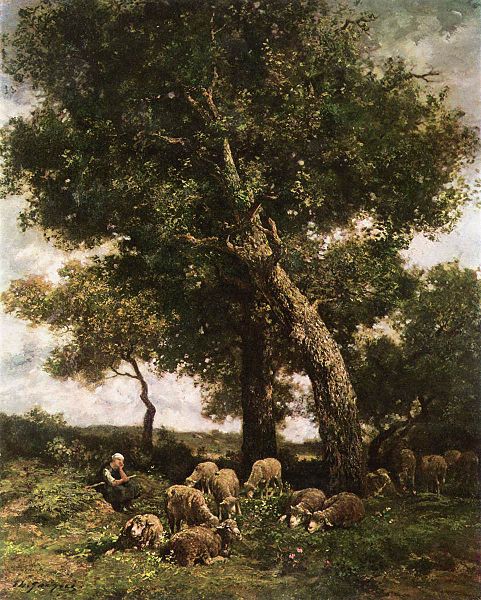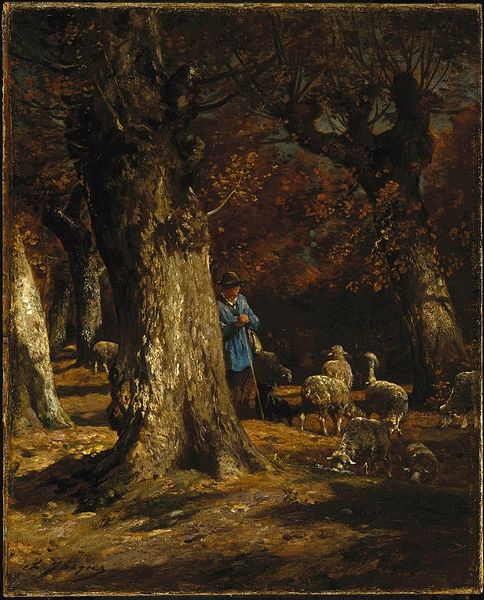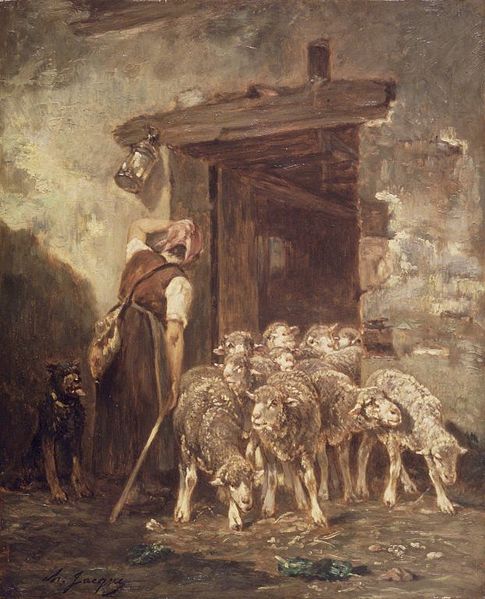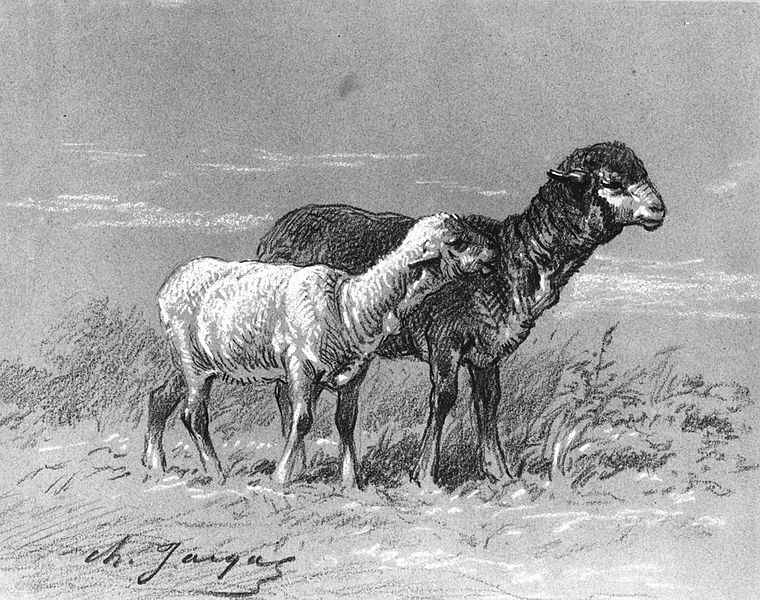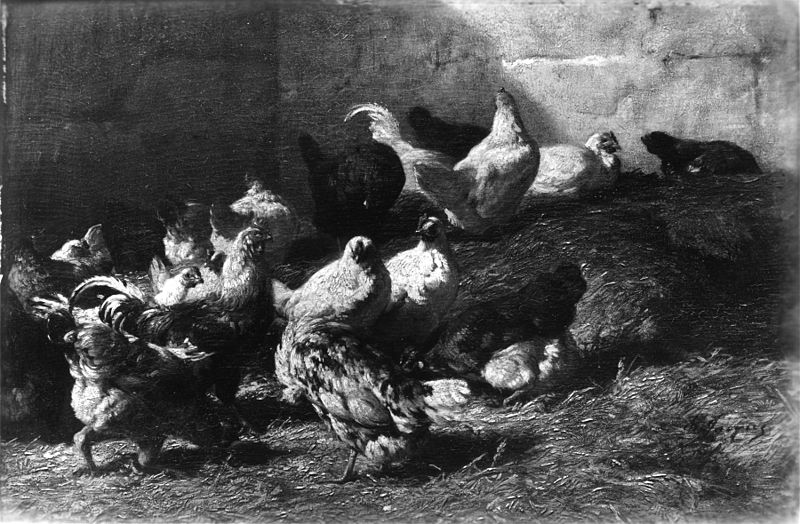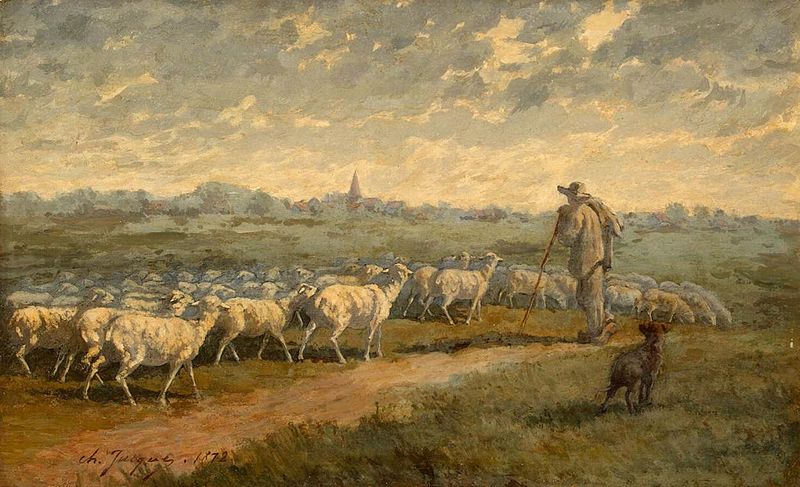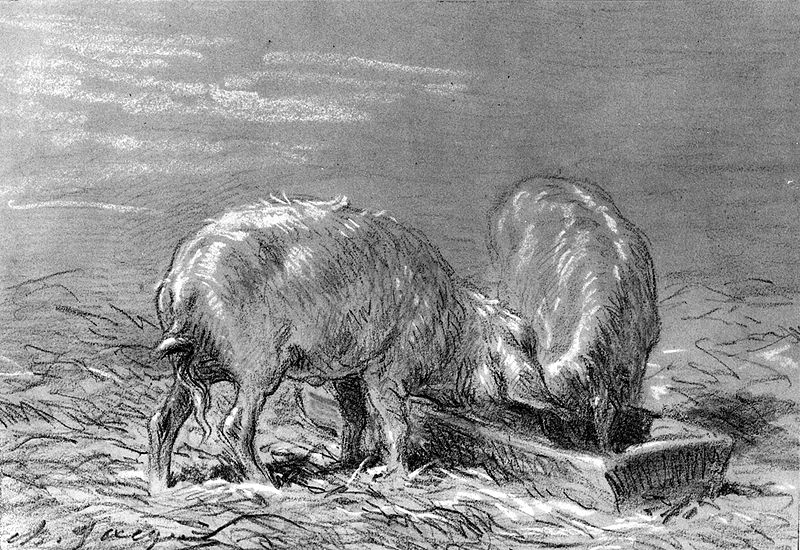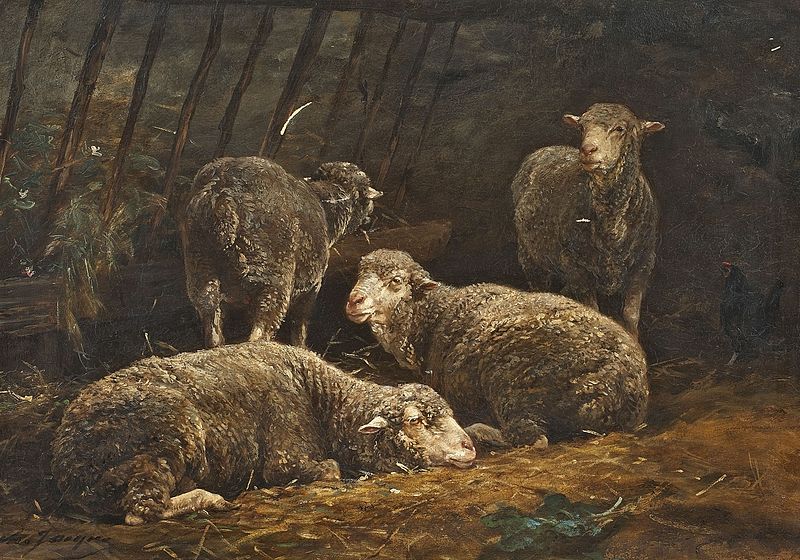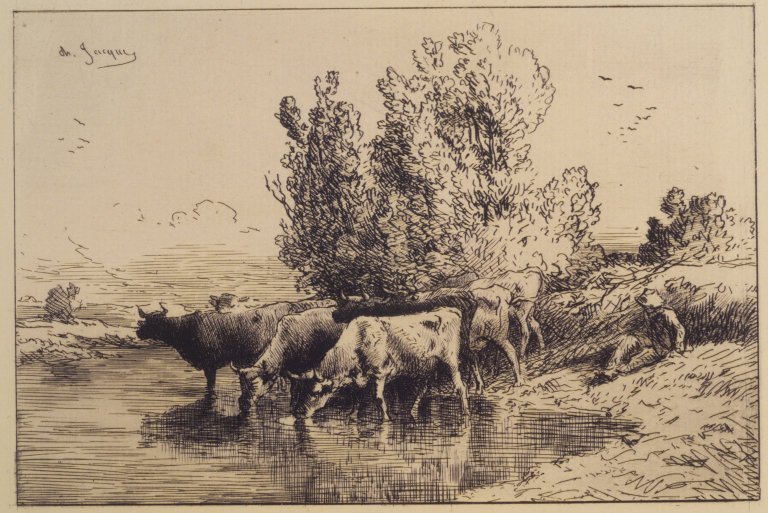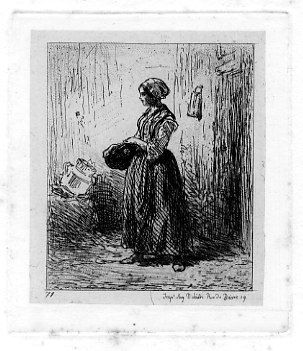<Back to Index>
- Painter Constant Troyon, 1810
- Painter Charles - Emile Jacque, 1813
PAGE SPONSOR
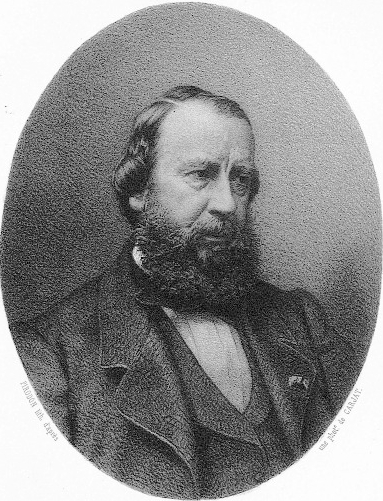
Constant Troyon (August 28, 1810 - February 21, 1865), French painter, was born in Sèvres, near Paris, where his father was connected with the famous manufactory of porcelain.
Troyon was an animal painter of the first rank, and was closely associated with the artists who painted around Barbizon. The technical qualities of his methods of painting are most masterly; his drawing is excellent, and his composition always interesting. It was only comparatively late in life that Troyon found his métier, but when he realized his power of painting animals he produced a fairly large number of good pictures in a few years. Troyon entered the ateliers very young as a decorator, and until he was twenty he labored assiduously at the minute details of porcelain ornamentation; and this kind of work he mastered so thoroughly that it was many years before he overcame its limitations. By the time he reached twenty - one he was traveling the country as an artist, and painting landscapes so long as his finances lasted. Then when pressed for money he made friends with the first china manufacturer he met and worked steadily at his old business of decorator until he had accumulated enough funds to permit him to start again on his wanderings.
Troyon was a favorite with Camille Roqueplan, an artist of distinction eight years his senior, and he became one of his pupils after receiving certain tuition from a painter, now quite unknown, named Alfred Riocreux. Roqueplan introduced Troyon to Rousseau, Jules Dupré, and the other Barbizon painters, and in his pictures between 1840 and 1847 he seemed to endeavor to follow in their footsteps. But as a landscapist Troyon would never have been recognized as a thorough master, although his work of the period is marked with much sincerity and met with a certain success. It may be pointed out, however, that in one or two pure landscapes of the end of his life he achieved qualities of the highest artistic kind; but this was after lengthy experience as a cattle painter, by which his talents had become thoroughly developed.
In 1846 Troyon went to the Netherlands, and at the Hague saw Paulus Potter's famous "Young Bull". From the studies he made of this picture, of Cuyp's sunny landscapes, and Rembrandt's noble masterpieces he soon evolved a new method of painting, and it is only in works produced after this time that Troyon's true individuality is revealed. When he became conscious of his power as an animal painter he developed with rapidity and success, until his works became recognized as masterpieces in Britain and America, as well as in all countries of the Continent.
Success, however, came too late, for Troyon never quite believed in it himself, and even when he could command the market of several countries he still grumbled loudly at the way the world treated him. Yet he was decorated with the Legion of Honor, and five times received medals at the Paris Salon, while Napoleon III was one of his patrons; and it is certain he was at least as financially successful as his Barbizon colleagues.
Troyon died, unmarried, at Paris on 21 February 1865, after a term of clouded intellect. All his famous pictures are of date between 1850 and 1864, his earlier work being of comparatively little value. His mother, who survived him, instituted the Troyon prize for animal pictures at the École des Beaux Arts. Troyon's work is fairly well known to the public through a number of large engravings from his pictures. In the Wallace Gallery in London are "Watering Cattle" and "Cattle in Stormy Weather"; in the Glasgow Corporation Gallery is a "Landscape with Cattle"; the Louvre contains his famous "Oxen at Work" and "Returning to the Farm"; while the Metropolitan Museum of Art and other galleries in America contain fine examples of his pictures. His "Valle de la Toucque, Normandy", is one of his greatest pictures; and at Christies sale room in 1902 the single figure of a cow in a landscape of but moderate quality fetched £7350. Emile van Marcke (1827 – 1891) was his best known pupil.
Constant Troyon died in 1865 and was buried in the Cimetière de Montmartre in the Montmartre Quarter of Paris.
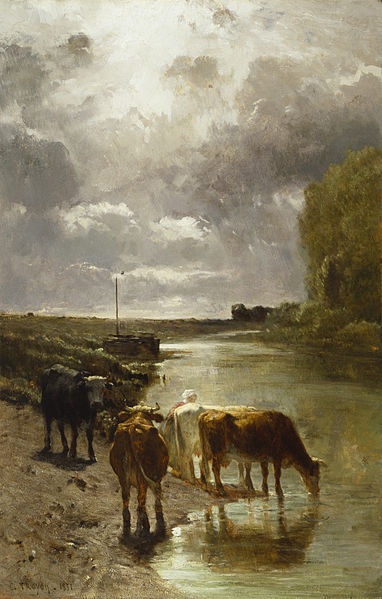
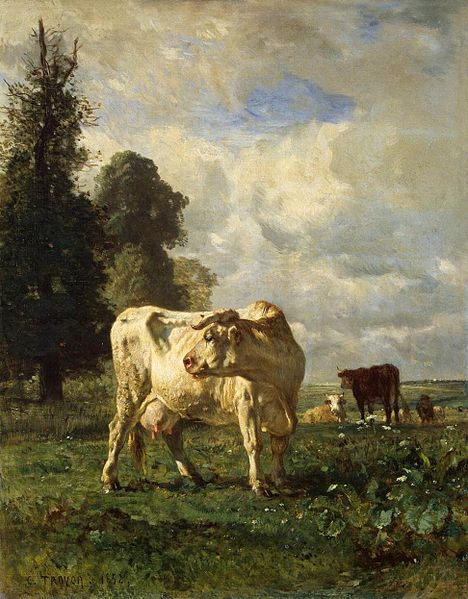
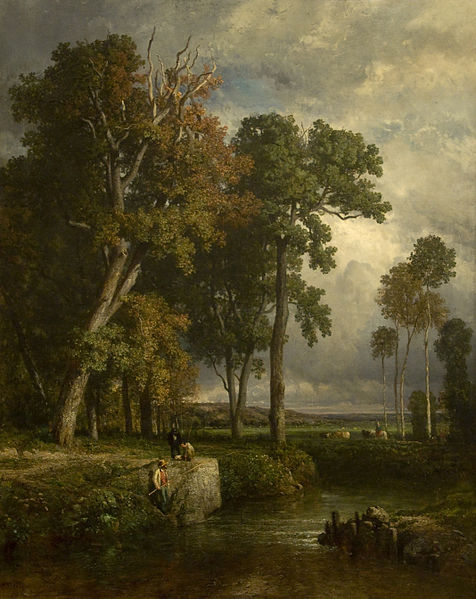
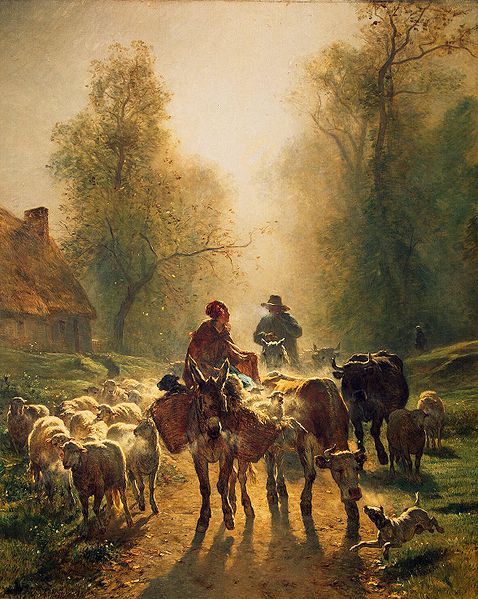
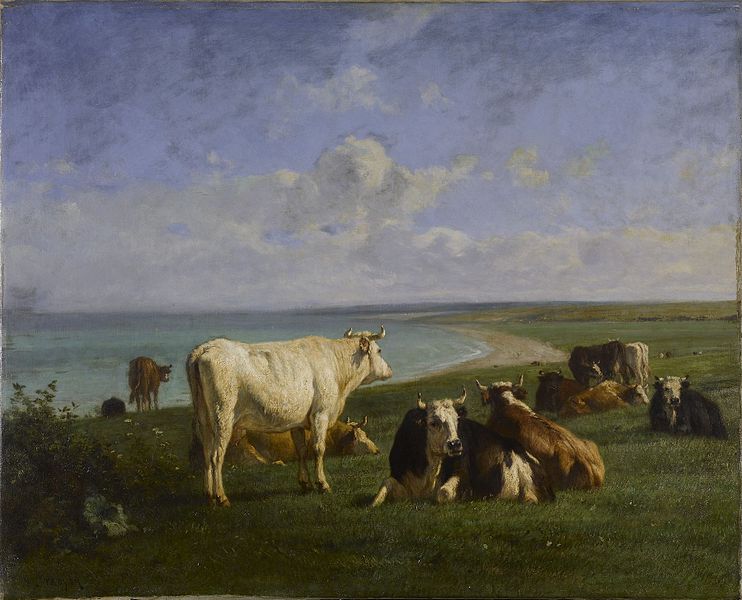
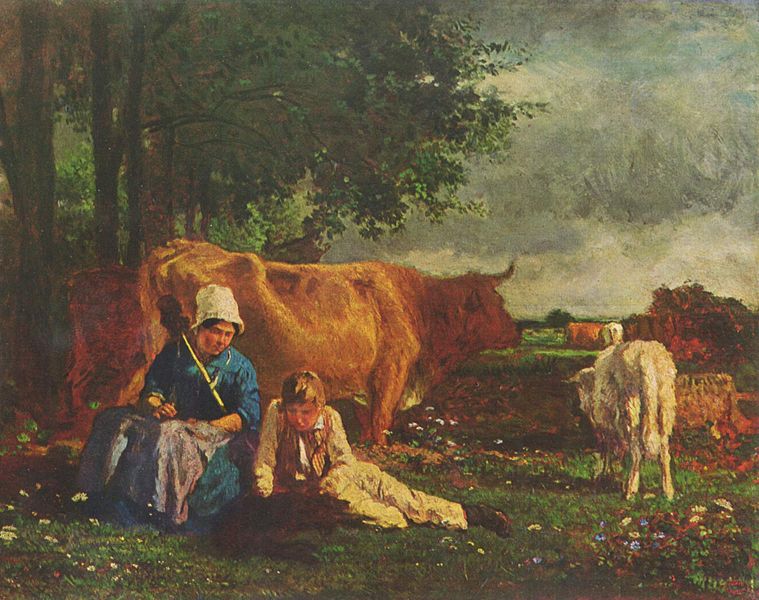
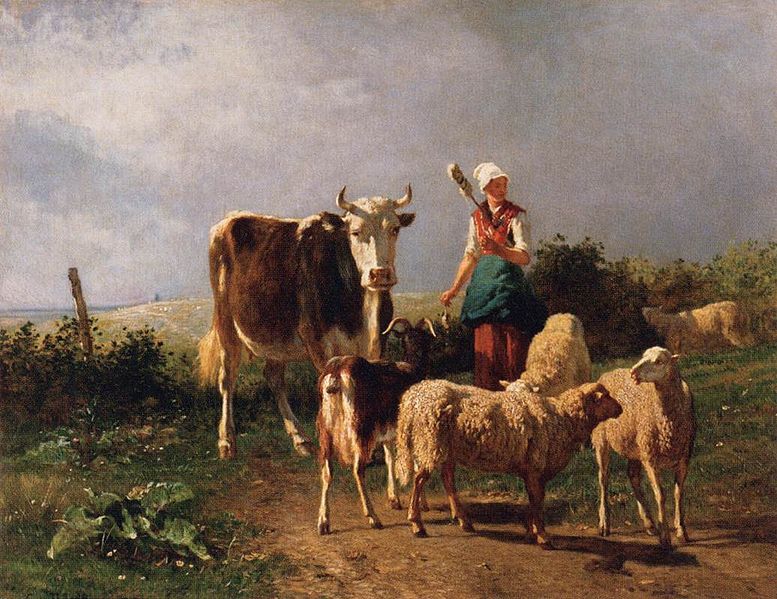
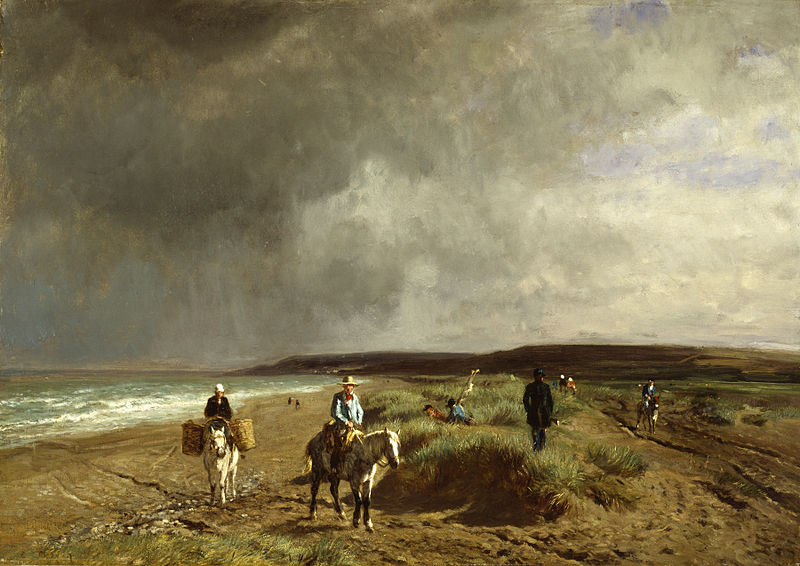
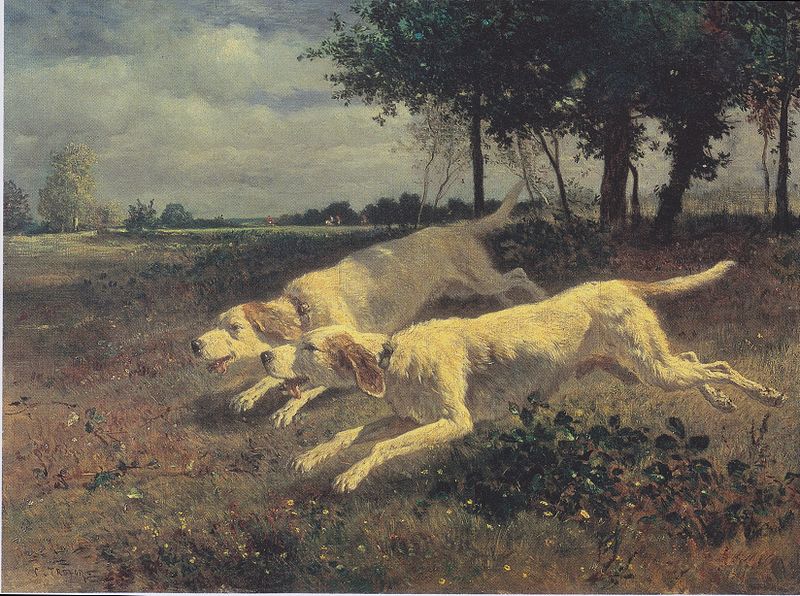
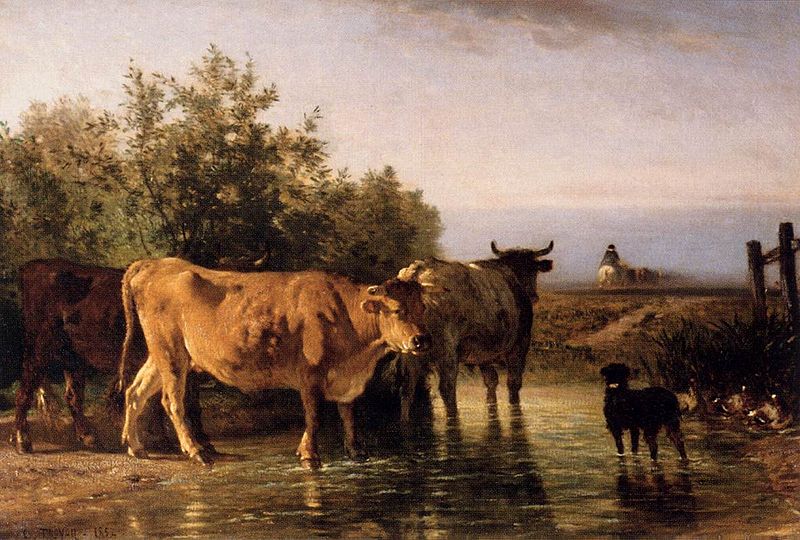
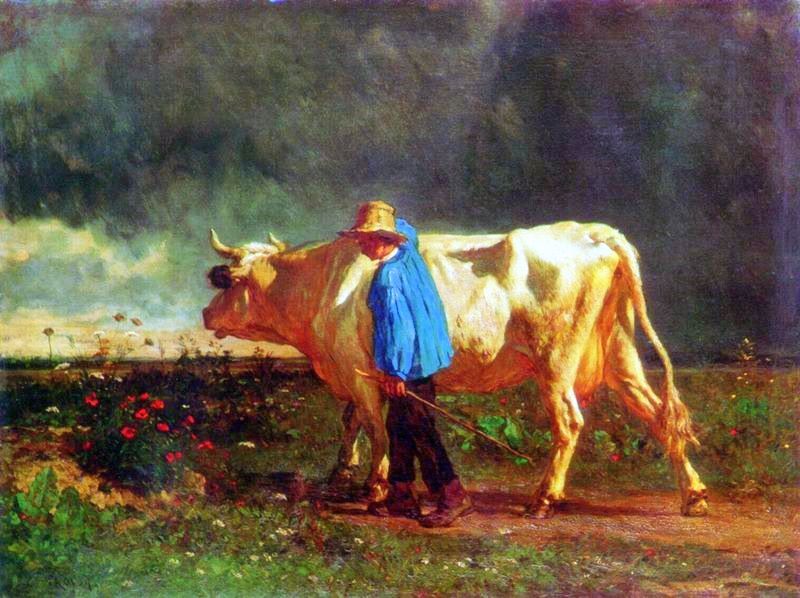
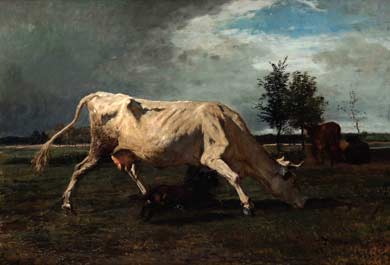
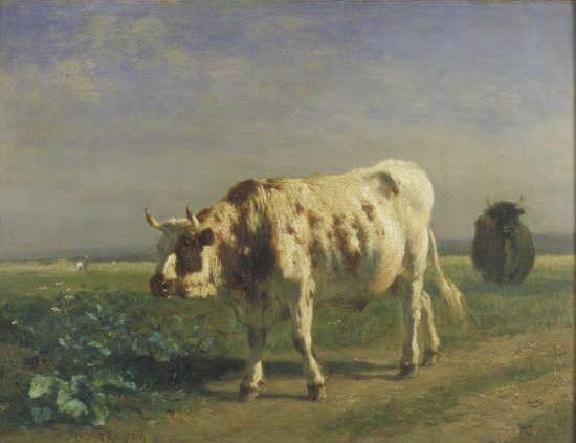
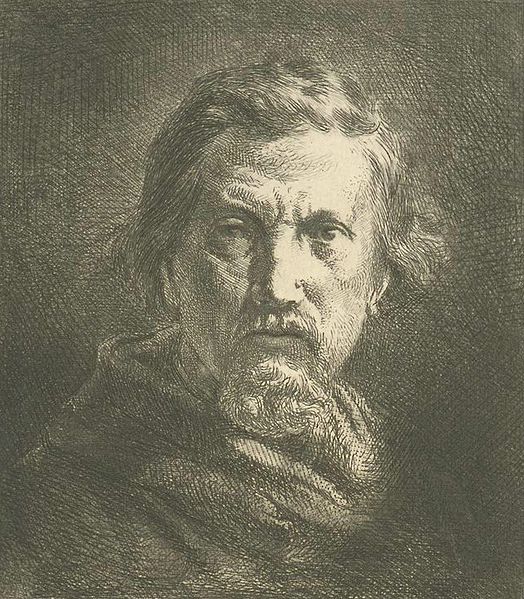
Charles - Emile Jacque (23 May 1813 – 7 May 1894) was a French painter of animals (animalier) and engraver who was, with Jean - François Millet, part of the Barbizon School. He first learned to engrave maps when he spent seven years in the French Army.
Fleeing the Cholera epidemics that besieged Paris in the mid nineteenth century, Charles Jacque relocated to Barbizon in 1849 with Millet. There, he painted rustic or pastoral subject matter: shepherds, flocks of sheep, pigs, and scenes of farm life. In addition to painting, Jacque was also famous for his etchings and engravings. He, along with Felix Bracquemond and Felix Buhot, is credited with the nineteenth century revival of seventeenth century techniques. He began his career as an engraver around 1841 by publishing a series of etchings with Louis Marvy. He followed this work with a series of engravings based on the works of Adriaen van Ostade, after which he began to create original engravings / artworks. Charles Baudelaire said of him, "Mr. Jacque’s new reputation will continue to grow always, we hope. His etchings are very bold and his subject matter is well conceived. All that Mr. Jacque does on copper is filled with a freedom and a frankness which reminds one of the Old Masters."
Henri Béraldi distinguished two periods in Jacque’s career. The first saw his creation of more spontaneous, Dutch inspired vignettes. In the second, for which he is more famous, he produced larger plates which, according to Fanica, were "marked by the Dutch character of his work."
Jacque also provided the illustrations for numerous books, in particular the Vicar of Wakefield by Oliver Goldsmith; The Indian Cottage, a novella published with Paul et Virginie; Picturesque Greece by Christopher Wordsworth; the Works of Shakespeare; and Ancient and Modern Versailles by Alexandre de Laborde.
One of Charles Jacque’s sons, Lucien, was executed as a Communard during the French State’s bloody repression of the Paris Commune.
